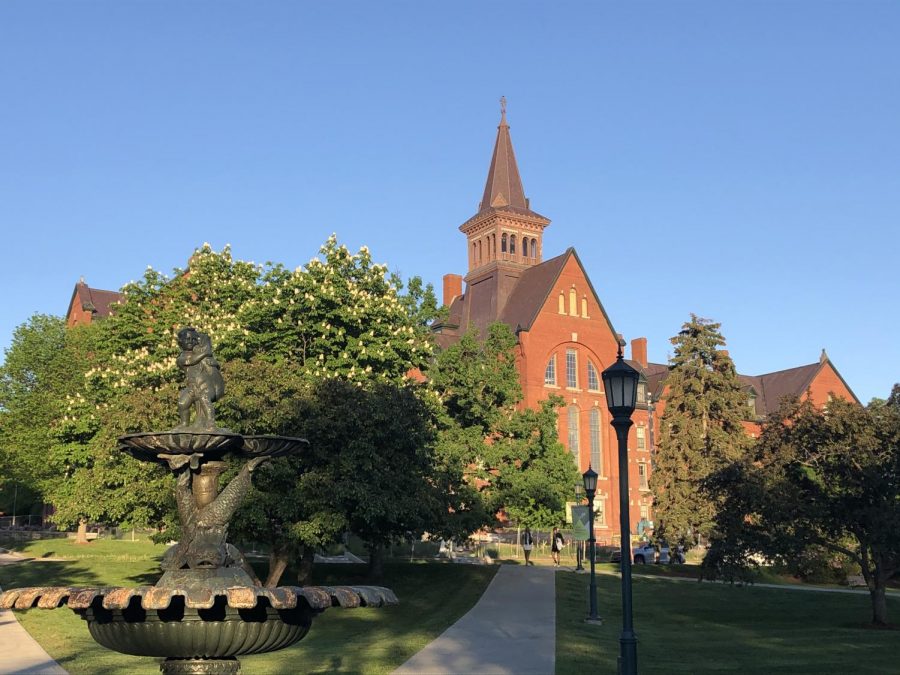It was fifth grade in early February when my teacher brought the snack into our classroom. It was the usual assortment: a muffin or a bread and apples.
But that day, the apples were different. My apple was perfectly sweet, juicy, and crisp. I ate one, then another, and another. After everyone had eaten their fill, I took the leftovers and stuffed my backpack with the beautiful fruit. I had found treasure.
Fifth grade was the first time I became aware of the superiority of February apples, but every year, the pattern has continued. For the rest of the year the Burlington School District (BSD) has standard apples. They are good, but nothing a fifth-grader would horde. Come February, the apples are transcendent.
This February, I decided to get to the bottom of the barrel. Where do the apples come from and why is February such a magical time?
To see if others shared my adoration of the scrumptious February fruit, I went to the cafeteria, library, and roamed the halls of BHS with a dozen apples. I had students take a bite, and describe the taste.
“It’s sweet,” Senior Colton Poulin said. “It’s pretty juicy. It has a crispness to it.”
“Very crisp, highly recommended,” Sophomore Rory Stein said.
“Tasty and crunchy!” sophomore Sustika Rai said.
I was not alone. After getting the confirmation I needed from BHS students, I began my investigation. I started by talking to Doug Davis, the Director of Food Services here at BHS. Davis has been at BHS for 22 years and is no stranger to the February apple magic.
“The apples you are seeing out there that are in February are called Empires,” Davis said. “They are deep dark red. They are super sweet and they stay really really crispy. Those are the best.”
Davis informed me that at the beginning of the year BHS is stocked with Paula Red apples, then McIntosh, come February, Empires, and later in the year, Cortlands.
Why are Empires supplied to the school in February? Wouldn’t the September and October apples be the most delicious, as that is the natural time of ripening? February is not apple season, so why do the apples taste so perfect? What exactly makes Empires so delicious? I had to know.
Luckily, Davis put me in contact with the orchardists who provide the Burlington School District with apples, and who he has known for about 25 years. Their names are Christiana and Barney Hodges, and they own Sunrise Orchards in Cornwall, Vermont. In a lovely interview over the phone, Christiana Hodges answered all of my apple questions as well as some I didn’t even know I had.

Christiana and Barney Hodges at Sunrise Orchards
I learned that she and her husband have been running Sunrise Orchards for close to 15 years. Before that, Barney’s parents ran the orchard. They bought the farm in 1971 as a dairy farm and spent the next decade replanting the farm with apples.
Now, Sunrise Orchards is a 200 acre, family owned and operated, wholesale apple farm that grows approximately 130,000 bushels of apples each year. They supply all of Burlington High School’s (BHS) apples.
In terms of the connection between the orchard and schools, Sunrise Orchards does not have a direct relationship with BHS, but they have provided apples through Reinhart Foodservice for over 15 years. Reinhart Foodservice is a national company that has a location in Essex, Vermont. They provide food for many schools in the area, including BHS.
Harvesting, storing, and packaging apples begins in September and early October when the apples ripen. The apples are picked off the trees, and put into 20-bushel bins and put onto a packing line.

Spring Apple blossoms bloom at Sunrise Orchards
Christiana Hodges described the packing line as a “Rube Goldberg kind of contraption”. The whole bin enters a big water dunk tank where the apples float to the surface. Then they travel around the corner to a “little place” where they are cleaned and dried. Here, the apples are sorted by weight and are graded based on blemishes, color, and size.
From there, the apples either get packaged and distributed or put into storage.
Sunrise Orchards stores their apples at Vermont Refrigerated Storage in Shoreham, Vermont. At the facility, there are two types of storage rooms for apples. There are regular storage rooms, which offer basic refrigeration, and others where the level of oxygen is lowered to sequentially slow the apple aging process down. This is called a “controlled atmosphere”.
Controlled atmosphere storage is how we get delicious, perfectly ripe apples in February, months after the harvest has ended.
Empires ripen later in the season, and are sturdy apples that store well. Because of this, BHS is stocked with Paula Red and McIntosh apples earlier in the year because they have an early harvest date and go bad more quickly. Now, in February after finishing off the finikier of the apple varieties, BHS serves the superior apples, Empire.
Case: solved.























